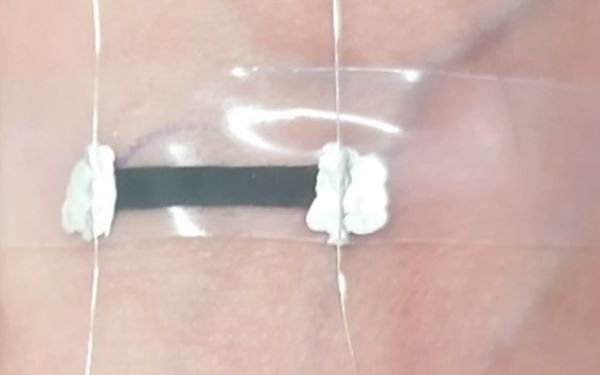
The team from Trinity College Dublin have created the next generation sensing technology using so-called G-Putty, an innovation from Trinity in which putty (polysilicone, found in children’s toy ‘silly putty’) is infused with graphene, making the material’s electrical resistance extremely sensitive to slight deformations.
Researchers add graphene to silly putty to create sensors and medical devices
The team's printed sensors are said to be 50 times more sensitive than the industry standard and outperform other comparable nano-enabled sensors in relation to their flexibility, making them suitable for wearable electronics and medical diagnostic devices.
Led by Professor Jonathan Coleman from Trinity's School of Physics, the team developed a method to formulate G-Putty based inks that can be printed as a thin-film onto elastic substrates, including plasters, and attached to skin.
By creating and testing inks of different viscosities the team found that they could tailor G-Putty inks according to printing technology and application. Their results are published in the journal Small.
In medical settings, strain sensors measure changes in mechanical strain such as pulse rate, or the changes in a stroke victim's ability to swallow. Strain sensors are available but are mostly made from metal foil that poses limitations in terms wearability, versatility, and sensitivity.
In a statement, Professor Coleman said: "My team and I have previously created nanocomposites of graphene with polymers like those found in rubber bands and silly putty. We have now turned G-putty, our highly malleable graphene blended silly putty, into an ink blend that has excellent mechanical and electrical properties. Our inks have the advantage that they can be turned into a working device using industrial printing methods, from screen printing, to aerosol and mechanical deposition.
"An additional benefit of our very low-cost system is that we can control a variety of different parameters during the manufacturing process, which gives us the ability to tune the sensitivity of our material for specific applications calling for detection of really minute strains."
According to Trinity, the wearable medical device market was valued at $16bn in 2020 with expectations for significant growth, particularly in remote patient monitoring devices.
"The development of these sensors represents a considerable step forward for the area of wearable diagnostic devices - devices which can be printed in custom patterns and comfortably mounted to a patient's skin to monitor a range of different biological processes,” said Dr Daniel O'Driscoll, Trinity School of Physics. "We're currently exploring applications to monitor real-time breathing and pulse, joint motion and gait, and early labour in pregnancy."
Professor Coleman was recently awarded a European Research Council Proof of Concept grant to build on these results and to develop a prototype for a commercial product.





Poll: Should the UK’s railways be renationalised?
I think that a network inclusive of the vehicles on it would make sense. However it remains to be seen if there is any plan for it to be for the...